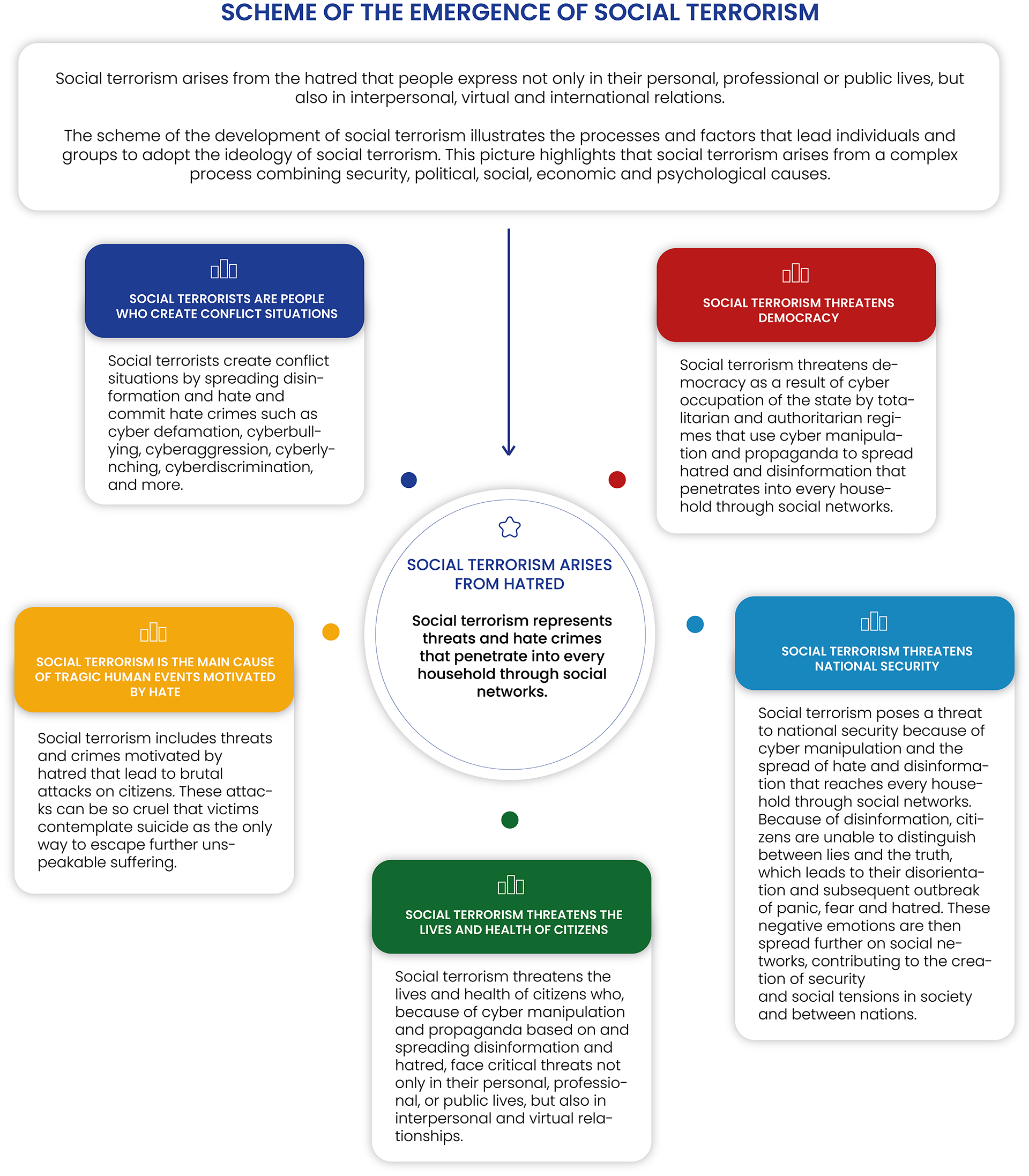Social terrorism is a new cyber threat that involves hate crimes infiltrating into every household through social networks. As a result, the state and citizens face a critical danger.
As a result, citizens face a critical danger. If a state or citizens face a critical danger as a result of threats and crimes committed in the online environment, then actors of such cyber threat have fulfilled the facts of social terrorism, which has many characteristics:
The list of causes of hate crimes resulting from social terrorism is extensive and complex, and includes a variety of factors and contexts:
- Hatred based on prejudice and stereotypes: People can be motivated to hate individuals or groups because of prejudices and stereotypes related to their race, ethnicity, religion, sexual orientation, gender identity or other characteristics.
- Social and economic inequalities: Inequality and poverty can lead to increased tensions between different groups in society and create a breeding ground for hateful thoughts and actions.
- Political manipulation and extremism: Political parties, extremist groups and the media can use hate as a means to manipulate and gain support or achieve political goals.
- Religious fundamentalism: Religious hatred can be motivated by extremist interpretations of religious texts or hierarchies that incite hatred against other religious groups.
- Lack of education and public awareness: Lack of understanding and education of the public about diversity and tolerance can contribute to the spread of hatred and discrimination.
- Psychological factors: Individuals who suffer from psychological problems related to hatred, aggression or low self-esteem can be more prone to commit hate crimes.
- Internet and social media: The anonymity and accessibility of the Internet can lead to the spread of hateful views and encourage hateful acts against individuals or groups.
- Nationalism and xenophobia: An exaggerated sense of belonging to one’s own national group and fear of foreigners can lead to hatred and aggression towards immigrants or minorities.
- Historical and cultural factors: Long-term conflicts, wars and cultural stereotypes can entrench hatred in the collective memory and fuel hateful behavior.
- Contemporary political and social events: Current events such as terrorist attacks, the migration crisis or political conflicts can cause fear and hatred towards certain groups of people.
These causes can act independently or interact with each other, complicating efforts to suppress hate crimes and build a more tolerant society.

